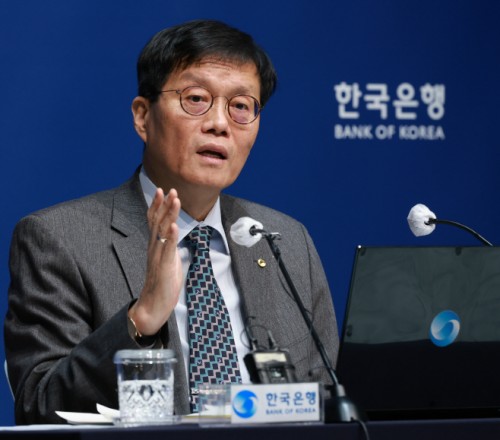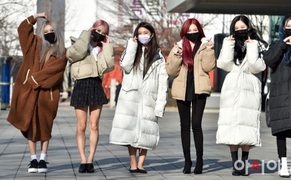 |
| Bank of Korea Governor Rhee Chang-yong answers questions during a press briefing on monetary policy at the central bank’s headquarters in Seoul on November 27. / Courtesy of the Bank of Korea |
The Bank of Korea (BOK) on Thursday revised up next year’s real GDP growth forecast to 1.8%, citing a rebound in consumer sentiment, strengthening semiconductor demand and easing global uncertainties. The central bank also projected that the economy will manage “1%-range growth” this year after slightly upgrading its 2025 estimate to 1.0%.
In its final economic outlook of the year, the BOK raised its 2026 forecast from 1.6% to 1.8%, aligning with projections by the government, the Korea Development Institute (KDI) and the International Monetary Fund (IMF). This reflects stronger-than-expected performance in the third quarter, which logged 1.2% growth, surpassing the BOK’s initial forecast of 1.1%.
The 0.2-percentage-point upward revision was driven primarily by a turnaround in the semiconductor cycle and reduced uncertainty following major trade negotiations. The central bank attributed 0.1 percentage point of the upgrade to chip-industry momentum, expansionary fiscal measures expected in 2026, uncertainty reduction following APEC, and the deferral of U.S. semiconductor tariffs. Easing U.S.–China trade tensions added another 0.05 percentage point, while sluggish construction activity offset the outlook by 0.15 percentage point.
The BOK said domestic demand is poised to strengthen next year as consumption recovers and construction activity stabilizes. While exports are expected to slow due to U.S. tariff pressures, semiconductors are forecast to maintain robust growth.
The central bank also projected that Korea will remain on a 1%-growth path through 2027, forecasting 1.9% expansion that year on the back of stable domestic momentum and improving global conditions.
“Exports and facility investment are expected to outperform earlier projections due to the trade agreement settlement and the global semiconductor upturn,” Governor Rhee Chang-yong said. “Expansionary fiscal policy and improving sentiment will also support consumption, though uncertainty remains high around global trade conditions, chip-sector volatility and the pace of domestic recovery.”
The BOK raised its inflation outlook for next year to 2.1%, up from 1.9%, while upgrading this year’s inflation projection from 2.0% to 2.1%. Despite the won having recently weakened past 1,450 per dollar, the bank said stable raw-material prices and steady crude-oil trends should keep consumer-price growth contained.
At its Monetary Policy Board meeting earlier in the day, the BOK held the benchmark interest rate at 2.5% for the fourth straight meeting, prioritizing financial stability amid a weak won and renewed housing-market heat. The rate has remained unchanged since a 0.25-percentage-point cut in May.
Most Read
-
1
-
2
-
3
-
4
-
5
-
6
-
7





















